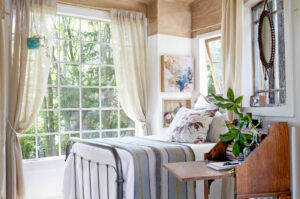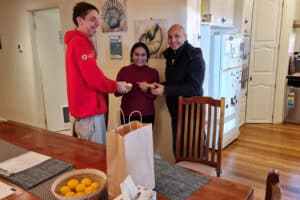Selecting the perfect NDIS long-term care option is critical for ensuring a homely environment that meets individual needs. “Tired of feeling like just another number in NDIS care? Discover how My Second Home changes the game by offering personalized, attentive care that makes you feel truly at home.”
Understanding NDIS Long-Term Care Options
Navigating the world of NDIS long-term care can be overwhelming, with various accommodation options available to participants. These options range from Supportive Independent Living (SIL), which offers structured support for daily tasks, to Individualised Living Options (ILO), providing a more customized living experience. Among the myriad of choices, finding one that offers the right balance of support and independence is crucial.
Key Components of NDIS Long-Term Care:
- Accessible Holiday and Short-Term Accommodation (STA): Vital for offering NDIS participants a change of scenery and a restful break. Options include fully accessible holiday accommodations on the Gold Coast and other serene locations, ensuring a seamless holiday experience.
- Support Workers and Support Staff: The backbone of daily support, providing assistance with personal care, community participation, and fostering independence. Our staff are trained to understand the unique needs of each participant, ensuring a personalized care experience.
- NDIS Supports and Funding: A comprehensive coverage for a variety of care needs, from centre-based day programs to personal home care, ensuring participants have access to the services they require without financial burden.
- Accessible Accommodation: Custom-designed living spaces that are not only wheelchair accessible but also cater to the specific needs of individuals, enhancing comfort and ease of living.
- Care Programs: Tailored to meet individual needs, these programs range from daily living skills training to recreational activities, promoting personal growth and well-being.
- Support Coordinator: A pivotal role, guiding participants through the complexity of the NDIS plan, helping to connect with the right services, and ensuring that participants receive the support they need.
- Centre Based and Community Activities: Opportunities for social interaction and community engagement, with activities planned around participants’ interests, from visits to theme parks to participating in local events.
Choosing the Right NDIS Long-Term Care for You
Selecting the right NDIS long-term care involves considering several factors, including the level of care needed, location preferences, and the types of activities and support services offered.
Considerations for Selection:
- Level of Independence Desired: Whether you’re looking for fully supported living or more independent options.
- Personalized Care and Support Needs: Evaluating the level of support required for daily activities, including the need for specialized support workers skilled in handling specific disabilities.
- Proximity to Essential Services: Location choice should consider accessibility to healthcare services, shopping centres, and social venues, enhancing the quality of life.
- Community and Social Engagement: The importance of being part of a vibrant community, with opportunities for social interactions and activities that align with the participant’s interests and abilities.
- Safety and Security Measures: Ensuring the accommodation is not only fully accessible but also secure and equipped with safety features to provide peace of mind for both participants and their families.
- Flexibility and Adaptability: The ability of the service provider to adapt to changing needs, offering flexibility in care arrangements and accommodation options.
- Access to Technology: Consideration of how well the accommodation integrates technology to support the independence and daily activities of participants.
- Respite Options: The availability of short-term accommodation options for respite care, allowing caregivers and participants to rest and recharge.
Making Your NDIS Long-Term Care Feel Like Home
To transform an accommodation into a home, it’s essential to personalize the space and ensure that the care provided aligns with the participant’s lifestyle and preferences.
Steps to Personalization:
- Individualized Care Plans: Developing care plans that reflect the unique preferences, interests, and needs of each participant, ensuring they receive the support that is most meaningful to them.
- Adaptable Living Spaces: Customizing the living environment to suit the individual’s tastes and requirements, from furniture arrangement to the choice of decor, making the space feel like their own.
- Inclusive Activity Planning: Involving participants in the planning of activities, ensuring access to both indoor and outdoor pursuits that cater to their interests, from engaging in local cultural events to exploring the natural beauty of the Gold Coast.
- Building Community Connections: Facilitating connections within the community, encouraging participants to build relationships and engage in community life, enhancing their sense of belonging.
- Technology Integration: Utilizing technology to enhance independence and communication, from smart home devices to assistive technologies tailored to the participant’s needs.
- Feedback and Continuous Improvement: Regularly seeking feedback from participants and their families to refine and adjust care plans and living arrangements, ensuring the accommodation continues to meet their evolving needs.
- Support Network Engagement: Encouraging and facilitating the involvement of family, friends, and informal supports in the participant’s life, fostering a supportive and inclusive environment.
More Than Just Care: Creating a Home Environment
My Second Home goes beyond providing basic care by creating an environment that feels truly home-like. This involves:
Holistic Well-being Focus: Beyond physical care, emphasizing mental and emotional well-being through programs that include mindfulness, art therapy, and social gatherings, ensuring participants thrive in all aspects of life.
Personal Choice and Control: Empowering participants with the ability to make decisions about their daily life and care, from selecting support workers to choosing activities, reinforcing their autonomy and personal preferences.

Environmental Harmony: Creating spaces that blend seamlessly with the natural environment, especially in picturesque locations like the Gold Coast, offering serene garden areas and easy access to outdoor activities, contributing to a calming and healing atmosphere.
Continuous Learning and Growth: Providing opportunities for participants to engage in educational programs, skill development workshops, and personal hobbies, fostering a sense of achievement and personal growth.
Pet-Friendly Policies: Recognizing the importance of companionship, some accommodations offer pet-friendly options, allowing participants to live with their cherished pets, enhancing the homeliness of their environment.
Sustainable Living Practices: Incorporating eco-friendly practices and sustainability into the living environment, from solar panels to community gardening, promoting a healthy planet as part of healthy living.
NDIS Funding and Home-Like Living Options
Understanding how NDIS funding can be utilized to support long-term, home-like living options is key. NDIS funding covers various aspects of long-term care, including:
- Respite Care Services: Allowing both participants and caregivers to take breaks for up to 28 days, ensuring continuous support without disrupting the sense of home.
- Accommodation Options: Funding supports a range of living arrangements, from short-term accommodation for a brief respite to longer stays, ensuring a seamless transition between different types of care.
- Support Coordination: Helping participants make the most of their NDIS plan by finding and managing the right services to meet their unique needs.
- Ongoing Plan Management: Offering resources for effective plan management, ensuring participants and their families can navigate the NDIS landscape with ease, from understanding funding allocations to choosing the best service providers.
By understanding the depth and breadth of NDIS long-term care options and how they can be tailored to meet individual needs, participants and their families can make informed decisions that lead to a fulfilling, home-like living experience. My Second Home stands ready to be part of that journey, ensuring every aspect of care is handled with empathy, professionalism, and a deep commitment to making every participant’s house feel like a true home.

